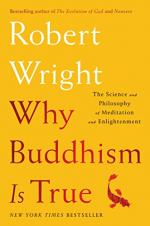
|
| Name: _________________________ | Period: ___________________ |
This quiz consists of 5 multiple choice and 5 short answer questions through Chapters 13-16.
Multiple Choice Questions
1. When the author opens his eyes after he is annoyed by a particular sound in group meditation, what is his first goal?
(a) To identify the victim.
(b) To look for a savior.
(c) To focus on his mantra.
(d) To identify the culprit.
2. The Buddha said that engagement is the product of a what?
(a) A shame.
(b) A feeling.
(c) A power.
(d) A lust.
3. The author states that specific types of what can turn off the autopilot mode for feelings?
(a) Behavioral therapies.
(b) Exercises.
(c) Music.
(d) Meditation.
4. William James wrote, "Between what a man calls me and what he simply calls" (196) what "the line is difficult to draw" (196)?
(a) His brother's.
(b) Mine.
(c) Himself.
(d) His master.
5. What is the one thing that the author says natural selection "cares about" (3)?
(a) Survival.
(b) Procreation.
(c) Evolution.
(d) Sustenance.
Short Answer Questions
1. What ratio does the author say he usually experiences throughout a meditation retreat when he mentions that part is bliss and part is difficult?
2. The Buddha stated that what emotion has a "poisoned root and honeyed tip" (30)?
3. Within what situation should one practice the RAIN technique, according to the author?
4. The author uses the example of his childhood experiences with the Tooth Fairy in order to demonstrate what concept?
5. The word vipassana is generally translated to what English word?
|
This section contains 226 words (approx. 1 page at 300 words per page) |

|




